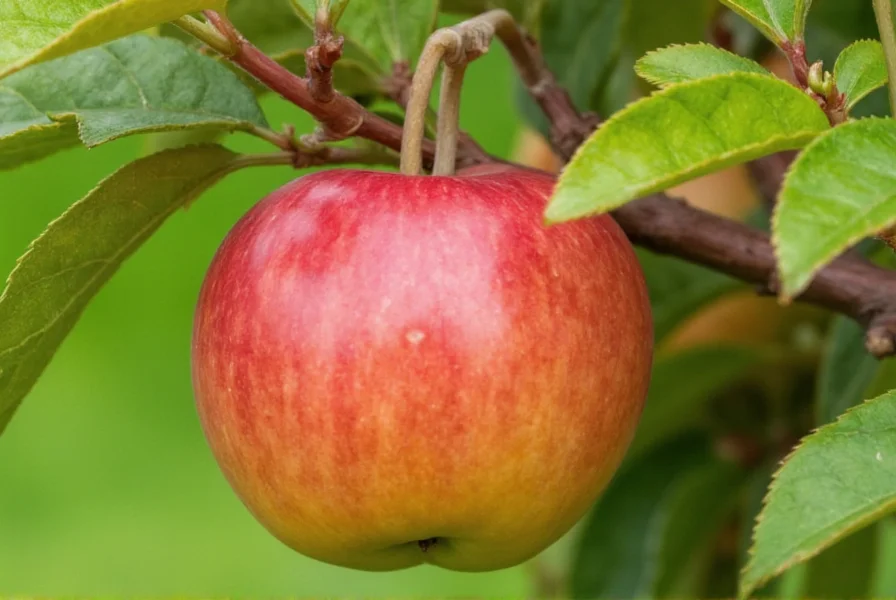When exploring ginger gold apple characteristics, you'll discover a fruit that stands out in both appearance and flavor profile. Developed at the Keswick Orchards in Virginia by Clyde D. Striegel, this cultivar emerged from a chance seedling of a Golden Delicious apple in 1969. The variety received its name from the reddish-gold blush that appears on the fruit's yellow skin when fully ripe, though many consumers know it primarily for its vibrant golden-yellow appearance.
Physical Attributes and Flavor Profile
Ginger Gold apples typically feature smooth, thin skin that transitions from pale yellow to a deeper golden hue as the fruit matures. Unlike many apple varieties that develop red streaks or blushes, Ginger Gold maintains its predominantly yellow appearance with only subtle pinkish undertones on sun-exposed areas. The flesh is creamy white, exceptionally crisp, and slow to brown after cutting—making it ideal for fresh preparations.
Regarding ginger gold apple taste characteristics, these fruits offer a balanced sweet-tart flavor with refreshing acidity that diminishes slightly as the season progresses. Early harvest Ginger Golds present more pronounced tartness, while later-picked specimens develop greater sweetness. This flavor evolution makes them versatile for both immediate consumption and short-term storage.
Seasonality and Availability
One of the most significant advantages of ginger gold apple harvest season is its early maturation. While most apple varieties don't become available until September or October, Ginger Golds typically reach peak ripeness in late August through early September, depending on the region. This early-season availability fills an important gap between summer stone fruits and the main apple harvest.
Grown primarily in the eastern United States, particularly in Virginia, North Carolina, and Pennsylvania, Ginger Gold apples have expanded to orchards across North America. Commercial growers appreciate this variety for its reliable production and resistance to certain common apple diseases, though it remains less widely available than mainstream varieties like Gala or Honeycrisp.
Comparative Analysis with Other Apple Varieties
| Apple Variety | Season | Flavor Profile | Best Uses |
|---|---|---|---|
| Ginger Gold | August-September | Sweet-tart, crisp | Fresh eating, salads |
| Golden Delicious | September-October | Sweet, mild | Baking, sauces |
| Honeycrisp | September-October | Very sweet, juicy | Fresh eating, cider |
| Granny Smith | October-November | Sharp tartness | Baking, cooking |
Understanding ginger gold vs golden delicious reveals important distinctions despite their genetic relationship. While both share similar yellow skin tones, Ginger Gold ripens 3-4 weeks earlier and maintains a more pronounced tartness. Golden Delicious develops greater sweetness but lacks the refreshing acidity that makes Ginger Gold so appealing for fresh consumption. Texture-wise, Ginger Gold offers superior crispness that holds up better in salads compared to the softer Golden Delicious.
Culinary Applications and Storage Recommendations
When considering best uses for ginger gold apples, their firm texture and balanced flavor make them exceptional for fresh applications. They excel in fruit salads, cheese pairings, and as standalone snacks. Their slow oxidation rate means sliced Ginger Golds maintain their appealing appearance longer than many other varieties—a valuable quality for food presentation.
While primarily enjoyed fresh, Ginger Gold apples can be incorporated into baking applications, though their delicate flavor may get overwhelmed in heavily spiced recipes. They work well in lighter pies, tarts, and crisps where their subtle sweetness can shine through. For optimal storage, keep Ginger Gold apples in refrigeration at 30-32°F with high humidity. Properly stored, they maintain quality for 2-3 months, though their early-season nature means they're best consumed relatively soon after harvest.
Nutritional Benefits
Like all apple varieties, Ginger Gold provides valuable dietary fiber, vitamin C, and various antioxidants. A medium-sized Ginger Gold apple (about 182g) contains approximately 95 calories, 25g of carbohydrates, and 4g of dietary fiber. The peel contains significant quercetin, a flavonoid with potential anti-inflammatory properties. While nutritional profiles remain consistent across apple varieties, choosing locally grown, seasonal Ginger Golds ensures maximum freshness and nutrient retention.
Common Questions About Ginger Gold Apples
Are Ginger Gold apples genetically modified?
No, Ginger Gold apples are not genetically modified. They originated as a chance seedling from a Golden Delicious apple tree in Virginia in 1969. The variety was developed through traditional breeding methods without genetic engineering.
How do Ginger Gold apples compare to Honeycrisp in terms of texture?
Ginger Gold apples offer a crisp texture similar to Honeycrisp but with slightly less explosive juiciness. While Honeycrisp is known for its dramatic "explosive" crunch, Ginger Gold provides a firm, consistent crispness that holds up well in salads and fresh preparations without becoming overly watery.
Can Ginger Gold apples be used for apple pie?
Yes, though Ginger Gold apples work best in lighter pies where their delicate flavor won't be overwhelmed. They maintain their shape reasonably well during baking but have a more subtle flavor profile than traditional pie apples like Granny Smith. For best results, combine Ginger Gold with a more tart variety to create balanced flavor in baked applications.
Why are Ginger Gold apples sometimes hard to find in grocery stores?
Ginger Gold apples have a relatively short harvest season (late August to early September) and don't store as well as some commercial varieties. Their early-season availability means they're often sold out before mainstream apple varieties hit peak season. Additionally, they're primarily grown in specific regions like Virginia and North Carolina, limiting widespread distribution compared to nationally marketed varieties.
Do Ginger Gold apples have any disease resistance?
Ginger Gold apples demonstrate moderate resistance to apple scab and cedar-apple rust, which makes them somewhat easier for growers to cultivate organically compared to more susceptible varieties. However, they remain vulnerable to fire blight and other common apple diseases, requiring careful orchard management for optimal production.











 浙公网安备
33010002000092号
浙公网安备
33010002000092号 浙B2-20120091-4
浙B2-20120091-4